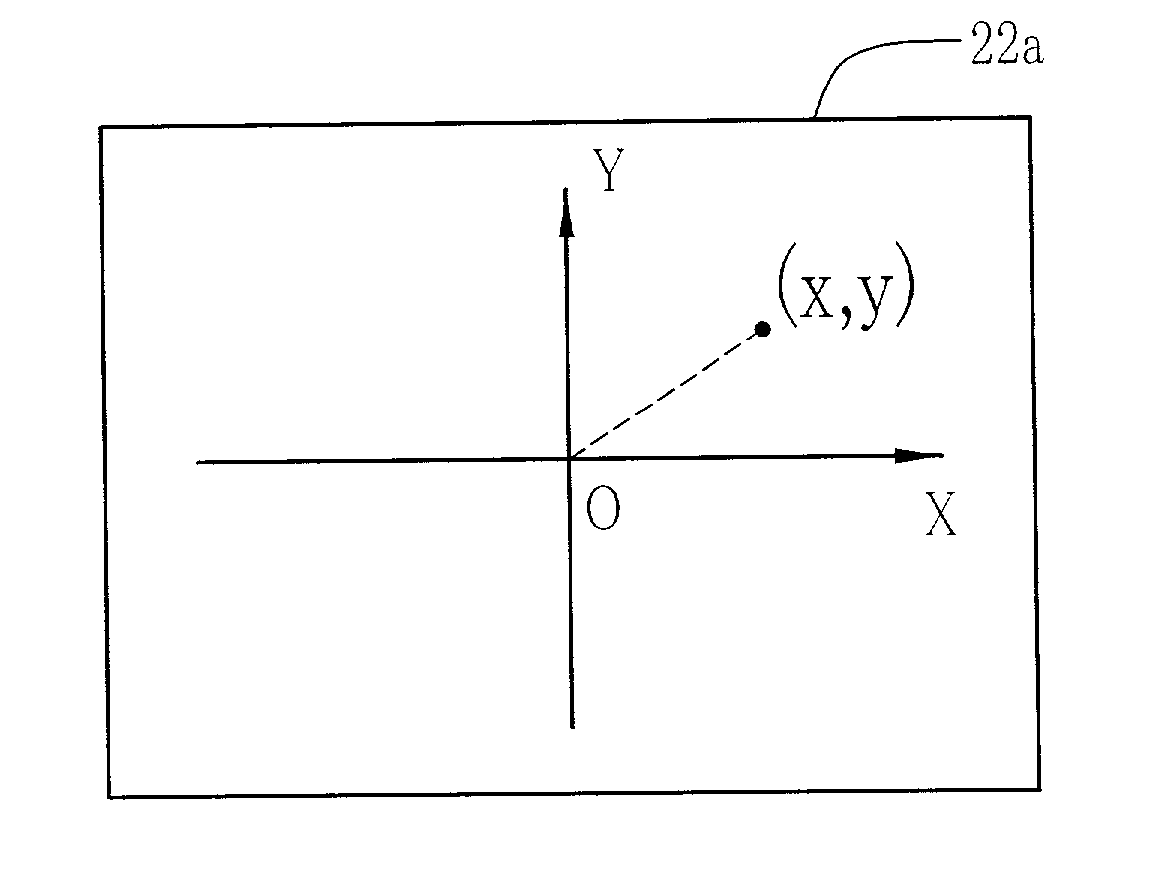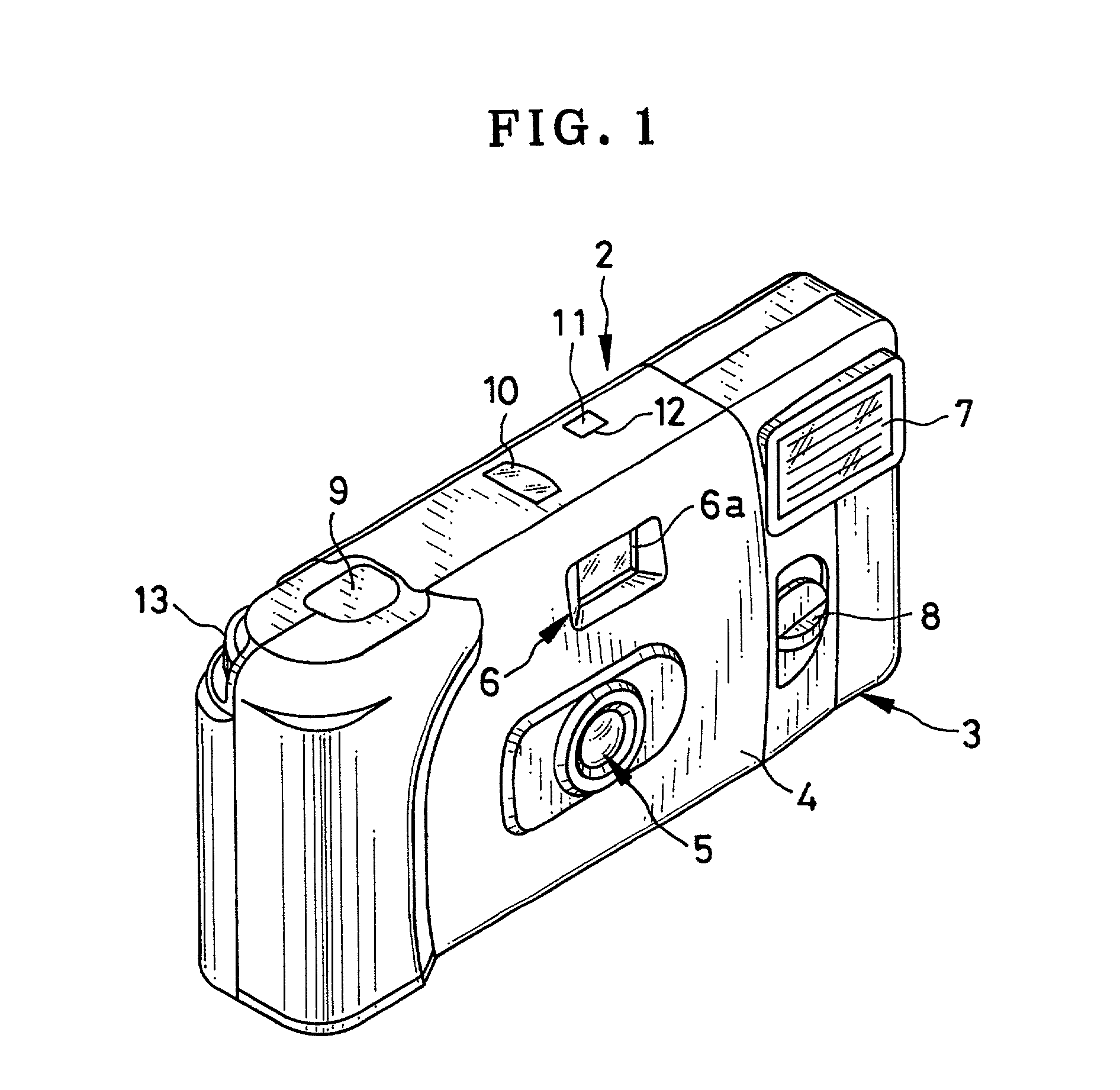Method of correcting image data picked up from photographic film
a technology of image data and camera, which is applied in the field of correcting image data picked up from pictures photographed on photographic film, can solve the problems of difficult to improve the performance of the taking lens, the lens distortion of the lens cannot be avoided, and the expensive taking lens cannot be applied to the lens-fitted photo film uni
- Summary
- Abstract
- Description
- Claims
- Application Information
AI Technical Summary
Benefits of technology
Problems solved by technology
Method used
Image
Examples
example 1
[0113]In the first example, only the image correction process for the distortion of the photographed picture by approximating the distortion to circles is carried out, and the correction process for the image magnification change is omitted.
[0114]The degree of distortion in the vertical line that corresponds to the incident angle of 29.424° in the X-axis direction is calculated as a radius Rx1 on the basis of two coordinate points (18, 0) and (18.14, 11.59), through a relationship between a radius Rx and line segments Ly and Ld, as shown in FIG. 6. In the same way, the degree of distortion in the vertical line that corresponds to the incident angle of 15.463° in the X-axis direction is calculated as a radius Rx2 on the basis of two coordinate points (9, 0) and (9.10, 11.91). On the other hand, the degree of distortion in the transverse line that corresponds to the incident angle of 19.923° in the Y-axis direction is calculated as a radius Ry1 on the basis of two coordinate points (0...
example 2
[0122]In the second example, the image data was subjected to the same distortion correction process was carried out using the same coefficients α, β, m and n as in the first example and, thereafter, to the magnification correction process for compensating for the change in image magnification.
[0123]Since the coordinate values shown in Table 3 are determined with reference to the incident angles on the taking lens 5, the locations of the vertical lines and the transverse lines in an ideal image photographed at an ideal image magnification may be calculated through an equation that represents a relationship between an ideal field height H, a paraxial focal length F and the incident angle θ. Although the ideal field height H is generally expressed as H=f×tan θ, since the taking lens 5 used in the present example has the distortion, the following equation (14) is used for calculating the ideal field height H in this example:
H=(F−ΔZ)×tan θ (14)
[0124]wherein ΔZ represents a deviation of ...
PUM
 Login to View More
Login to View More Abstract
Description
Claims
Application Information
 Login to View More
Login to View More - R&D
- Intellectual Property
- Life Sciences
- Materials
- Tech Scout
- Unparalleled Data Quality
- Higher Quality Content
- 60% Fewer Hallucinations
Browse by: Latest US Patents, China's latest patents, Technical Efficacy Thesaurus, Application Domain, Technology Topic, Popular Technical Reports.
© 2025 PatSnap. All rights reserved.Legal|Privacy policy|Modern Slavery Act Transparency Statement|Sitemap|About US| Contact US: help@patsnap.com



